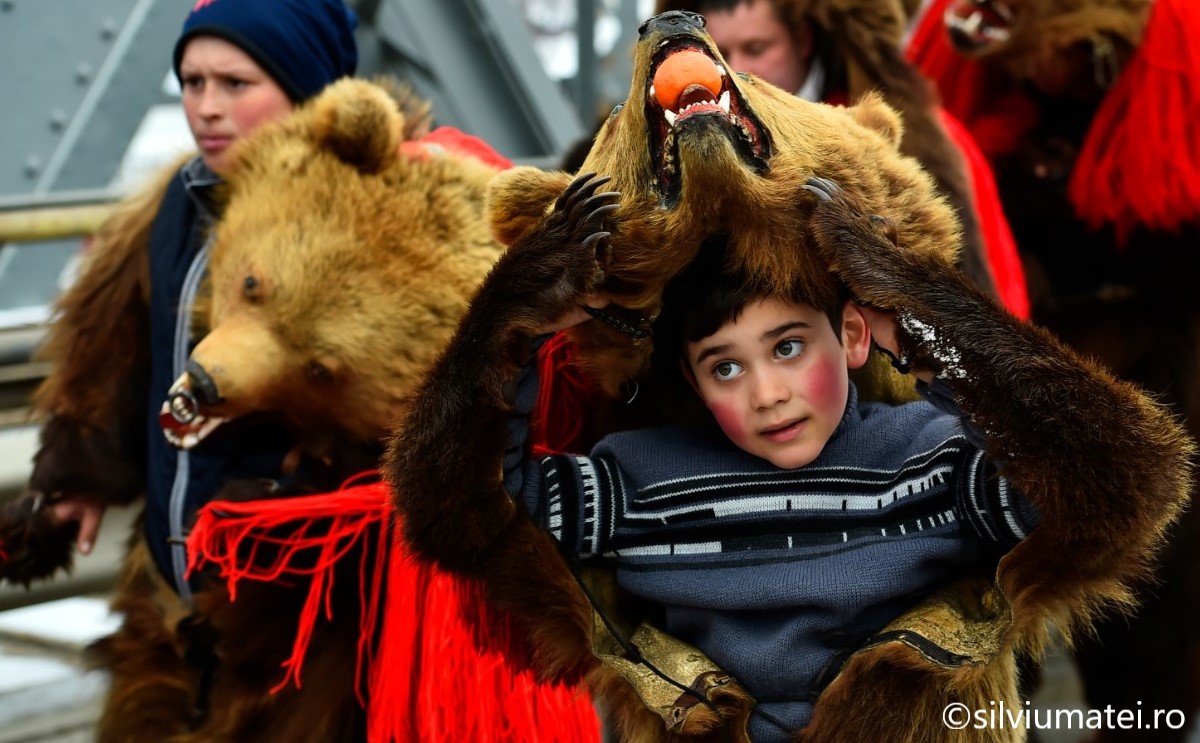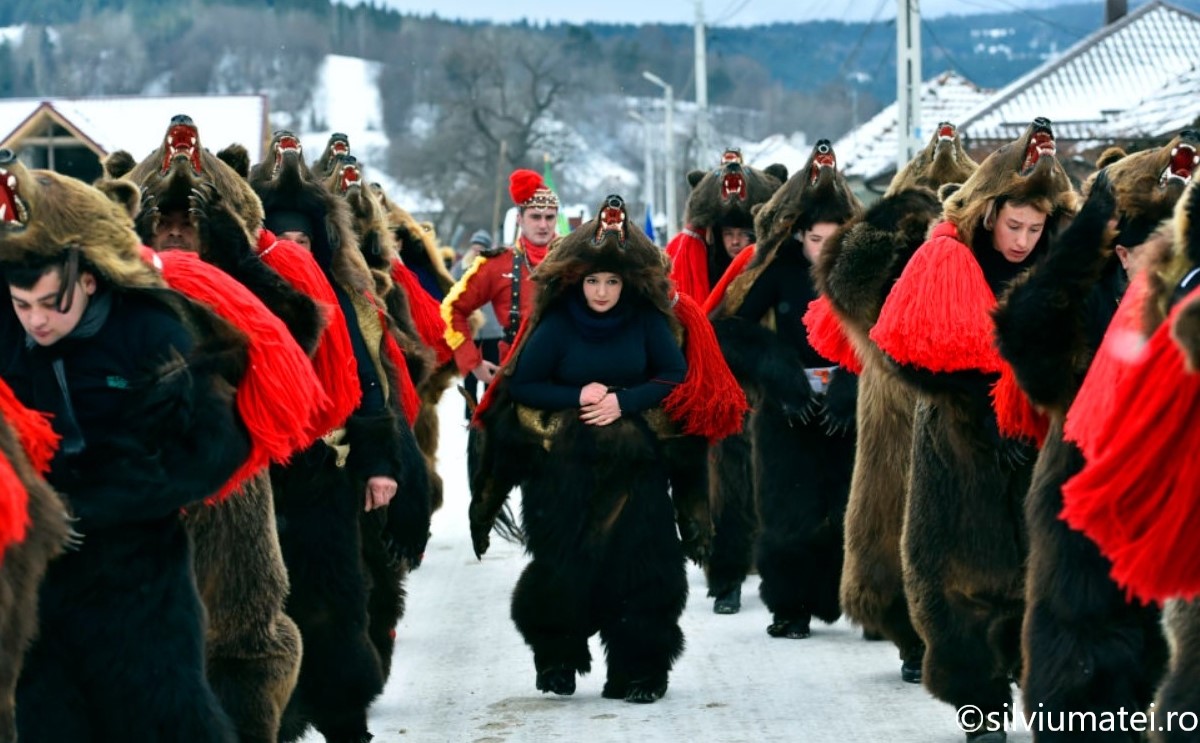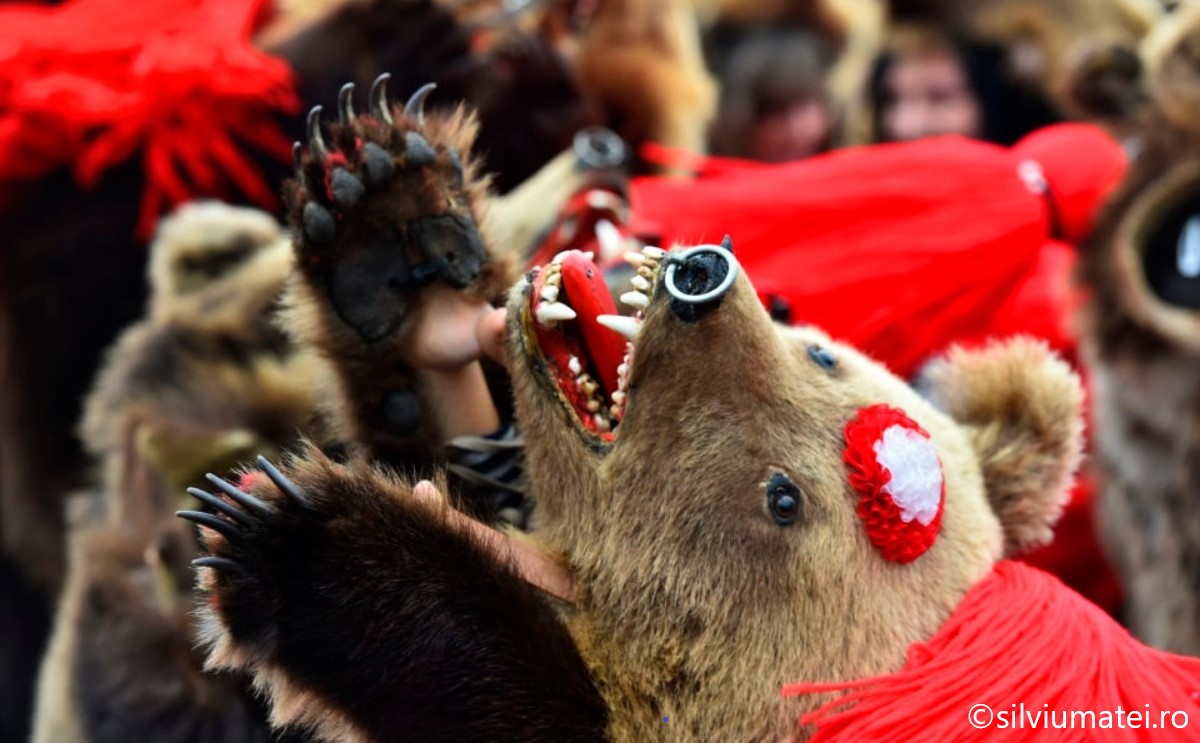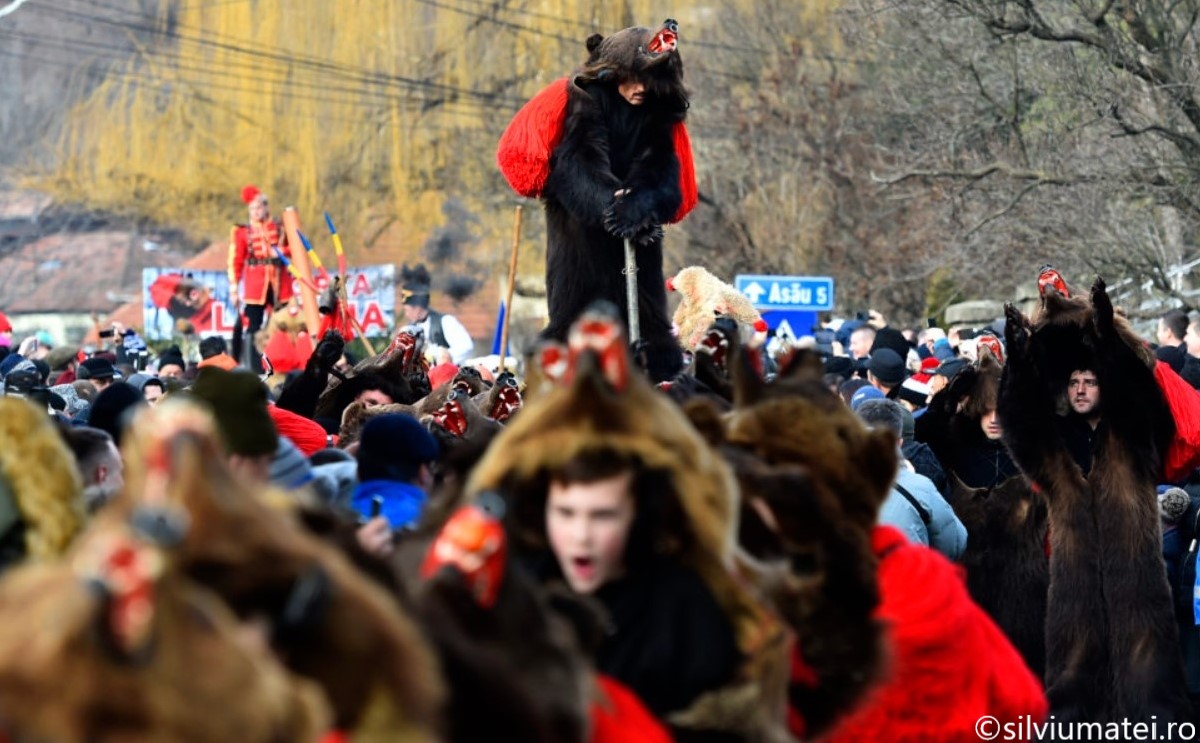The bear is present in every season, in the popular Romanian spiritual calendar: first, at the beginning of the year, the first three days of February are dedicated to prehistoric divinities called "Winter Martins", patrons of bears. The most dangerous and powerful of them, the "Big Martin", is celebrated on February 2, called "Stretenia", or Bear Day.
Bear Day is celebrated in Romania and by other European nations on February 2, on the date of Groundhog Day, marked in the area of the United States of America and Canada. Both have in common the element of predicting the weather for the next period. The bear had a special calendar role in the northern populations who assimilated it with the Moon, because it disappears with the arrival of winter and reappears in the spring.
The change of seasons indicated by the bear through disappearing in winter and suddenly appearing in spring probably represented the reason why it is among the oracle animals, of foresight and orientation in time. It is a favorable time for meteorological and astronomical observations, for prophesying the abundance of vines and fruit trees. According to tradition, the bear would come out of its den on this day to look at its shadow in the snow. If it's cold, foggy and he can't see his shadow he tears down his den, shoots a game, goes to the river, drinks a mouthful of water and goes about his business in the forest. Conversely, if the weather is nice, it's sunny and he sees his shadow on the snow, he goes back into the den because winter will last another 40 days.
The common celebrations of the vine and the bear from the beginning of February overlap two biorhythms in nature: in the forest the bears are born, and in the vine trunks and in the stems of the fruit trees in the vineyards and orchards, the sap begins to move. There is, by the way, a parallel between the bear and the vine, the good wine being compared to the "power of the bear".
Otherwise, an old custom that is practiced on the day of Stretenie is "Târcolitul viilor". According to this custom, the head of the family has the duty to visit the vineyard in the morning of this day. At the same time, the householder must have with him a saussage and a bottle of wine in the trunk. He will thus officiate a kind of ritual: he will go around the vineyard three times, put a piece of sausage in each corner of the vineyard, after which he will cut a vine rope which he will smear with soot and drink a mouthful of wine. At the end, after all this has been accomplished, he will say a magic formula in the form of a monologue or dialogue: "Lord, make my grapes as big as the ‘budarete’ (animal’s belly)!".
There are many superstitions specific to the day of Stretenie, most of them related to weather forecasting:
• He who works on this day will fall ill and his mouth will be distorted;
• Whoever is born or gets married on this day will have only troubles and will not do well.
• If the ox will drink water from his tail, then it is a sign that winter is passing;
• If an ox drinks water from the eaves of the house, then the year will be one with manna for bees and sheep;
• If it is warm, then during the year there will be a warm and abundant summer, and if on this day it is cold, frosty and blizzard, then the summer will be cold and barren;
• On this day, the slope bends, that is, the snow begins to melt, etc
Stretenia is also a celebration when old women gather together and start talking about the likes and dislikes.
In folk beliefs, fairy tales and legends, the bear is a strange creature of the forest: it gives birth to cubs in winter, while other creatures await the warm season; if the weather is nice, it enters the shelter, if the weather is bad, it resumes its activity in the forest; when he finds a bridge over the river it destroys it, when he doesn't find one, it cuts down a tree and builds a bridge. People associated this bear behavior with the capricious time of late winter and early spring. On the other hand, the bear is invested with multiple protective and therapeutic virtues - thus there was a popular belief that a newborn, if it was given bear fat on its body, at the first wash, gains strength and the luck of the bear. Those who were sick or scared were smoked with their hair tied from bear fur, or it was also customary for the physically weak or sick to be "baptized", receiving the name “the Bear”, to drive away diseases and death, the ritual being different from the Christian one. Since the Middle Age, there are evidences that bears were used to cure lumbar pains, or "bear trample" - bears specially trained to massage their feet. On the other hand, there was also a tradition for men to be trampled by a bear in the spring, because it was believed that they would no longer have back pain after working in the fields.
Santa Martin, as the personification of the bear, was celebrated on several days apart from the three at the beginning of February. For example: Maccabees (August 1) or Autumn Martini (November 12-14) and Bear Saturday (in the Easter fast).
In these days, people avoided saying the word bear, but said "Moș Martin", "Santa" or "The Old One".
Another celebration, “Maccabees” or “Impuiatul Úrsilor” is celebrated on August 1, the day that symbolically opened the reproduction cycle of the bears. Bears mate in late summer and early fall, and after a gestation period of 7-8 months, the female bear gives birth in early February.
Bear Saturday was celebrated during the Easter fast, before the Annunciation (March 25). The women kept the Bear Saturday so that they would not be attacked during the summer, when they walk through the woods for raspberries, blueberries, blackberries and other things. On this day, there was no mention of the bear in some villages, for fear of him. The women did not wash their hair, thinking that the bear was eating them. They didn't sew, they didn't glue, and they didn't do any scratchy work, because the wolf eats the cattle from time to time.
Around the winter holidays, the bear plays an important role in the traditions of Moldova, in the mask games. Archaic and pastoral customs, originally they were ceremonies related to the periodic return of the dead and involved all kinds of animal masks - horse, goat, bear".
The bear mask game symbolizes the death and rebirth of nature. The most archaic form of representation of the bear is the one made of straw, but over time, this mask was made from real bear fur. To obtain the straw costume, strips of oat/wheat straw are twisted, which on the morning of New Year's Eve, are sewn onto the wearer's clothes. At the end of the game, the costume was thrown into the fire to burn, thus symbolizing the death and rebirth of the vegetation (along with the resulting ash and thrown over the field, as fertilizer), along with the passing of the seasons. More recently, the symbolism of the ceremony is no longer valued as in the past, the playful component being more important: the bears are played by people dressed in bear fur decorated with pins, belts and large red canvases.
Bibliography:
https://www.traditii-superstitii.ro/ziua-ursului-traditii-obiceiuri-si-superstitii/
”Sărbători şi obiceiuri româneşti” - Ion Ghinoiu, Editura Elion, 2002,
”Calendarul țăranului român - zile și mituri" - Ion Ghinou, Editura Univers Enciclopedic, 2017.





